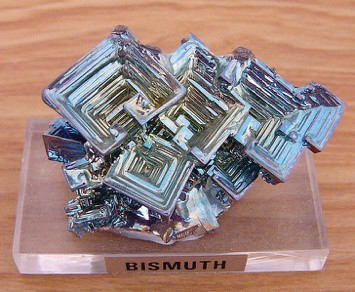Chapter 2. Minerals
You can download a pdf copy of this lab to print, and order a copy of the lab manual from the bookstore!
Adapted by Lyndsay R. Hauber & Joyce M. McBeth (2018) University of Saskatchewan from Deline B, Harris R & Tefend K. (2015) “Laboratory Manual for Introductory Geology”. First Edition. Chapter 7 “Minerals” by Randa Harris, CC BY-SA 4.0. View source. Last updated: 8 Jan 2020
2.1 INTRODUCTION
Have you used a mineral yet today? While many people may initially say no, answer these questions: Have you brushed your teeth? Have you eaten anything that might contain salt? Did you put on make-up this morning, or do you have painted fingernails or toenails? Have you used a cellphone? What about a car, bike, or public transportation? If you have done any of those things, you have used at least one mineral, and in many cases you have used a great number of minerals. Minerals are very useful and common in everyday products, but most people do not even realize it.
A mineral is defined as a naturally occurring, inorganic solid, with a definite chemical composition and a characteristic crystalline structure. By naturally occurring, it means that anything man has created does not count as a mineral (e.g. Figure 2.1). To be an inorganic solid, the mineral must not be composed of the complex carbon molecules that are characteristic of life and must be in the solid state, rather than vapor or liquid. This means that water, a liquid, is not a mineral, while ice, a solid, would be, as long as it is not man-made. A definite chemical composition refers to the chemical formula of a mineral. For most minerals, this does not vary (e.g. halite is NaCl), though some minerals have a range of compositions, since one element can substitute for another of similar size and charge (e.g. olivine is (Mg,Fe)2SiO4, and the magnesium and iron content can vary). The atoms within minerals are lined up in an orderly fashion, so that the characteristic crystalline structure is just an outward manifestation of the internal atomic arrangement.

Source: Philippe Giabbanelli (2010) CC BY-SA 3.0 view source
2.1.1 Learning Outcomes
After completing this chapter, you should be able to:
- Know the definition of a mineral
- Understand the many different physical properties of minerals, and how to apply them to mineral identification
- Be able to distinguish mineral cleavage from mineral fracture
- Identify 21 minerals
2.1.2 Key Terms
- Cleavage
- Crystal Form
- Fracture
- Hardness
- Lustre
- Mineral
- Specific Gravity
- Streak
- Tenacity

